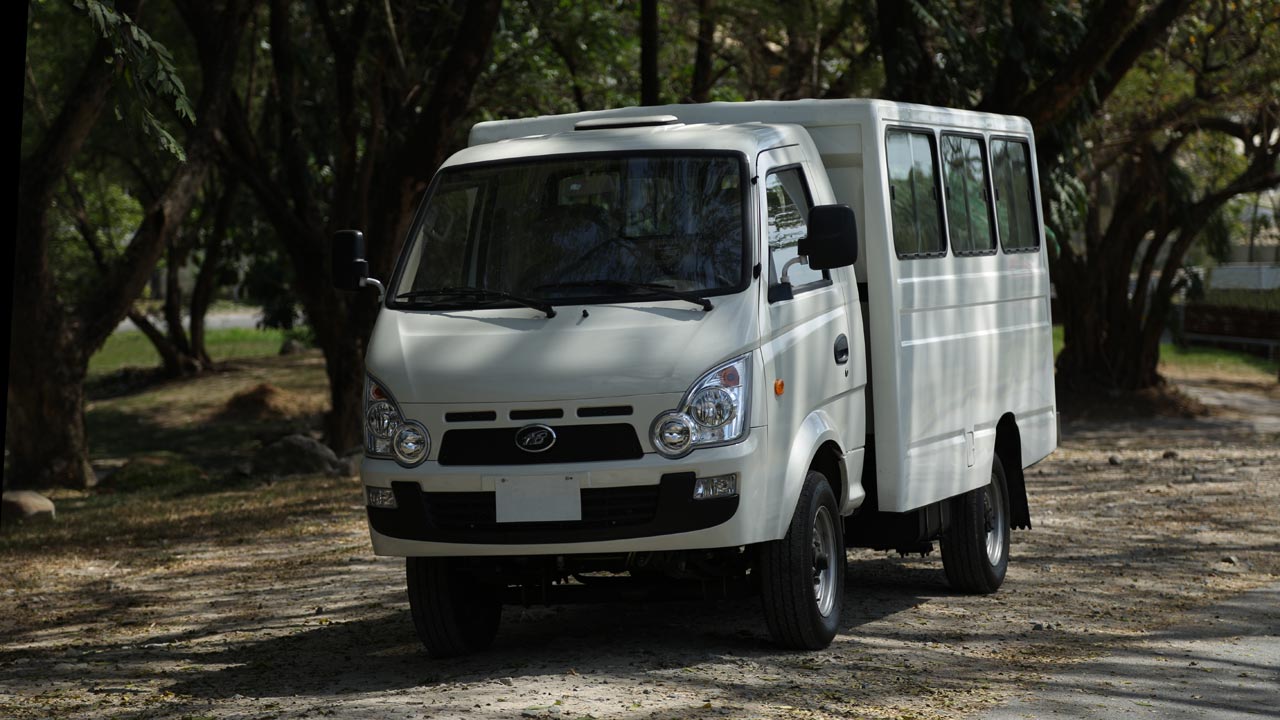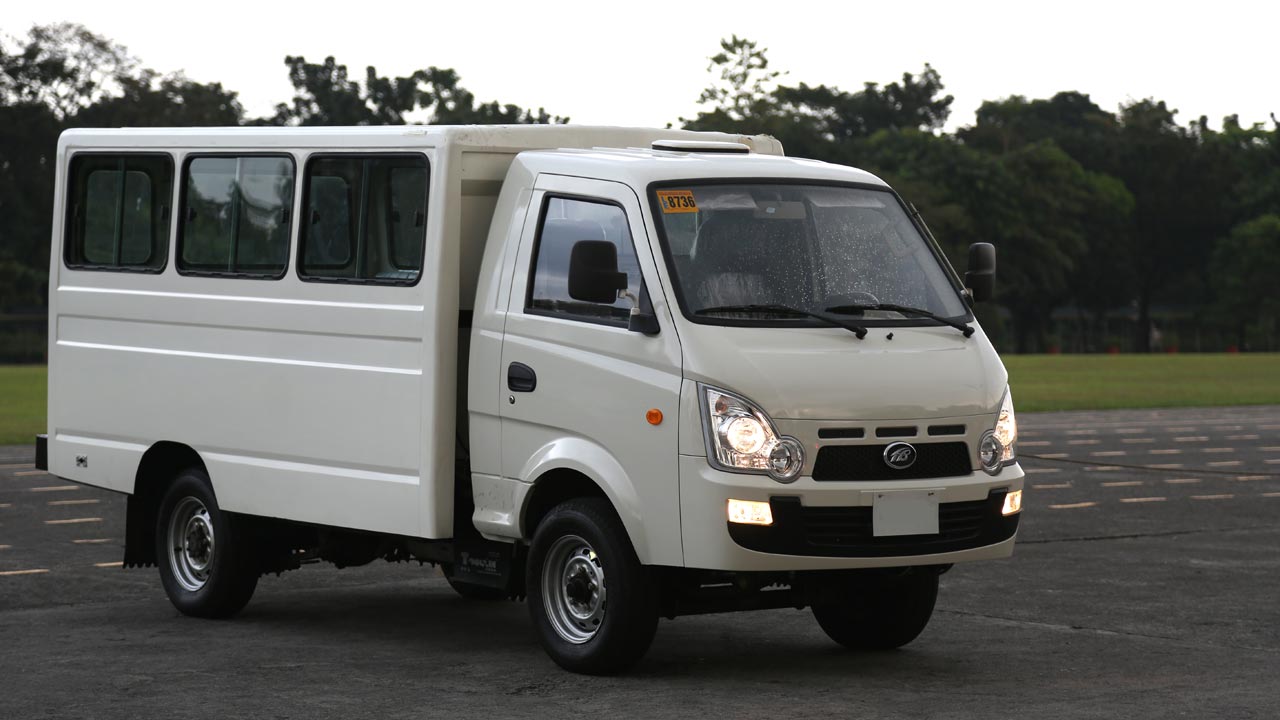BAIC has introduced their large M60 multi-purpose vehicle (MPV) at the 7th iteration of the biennial Philippine International Motorshow (PIMS) which ran from October 24 to 28 at World Trade Center in Pasay City. The new M60 is their first van with: (1) front-wheel-drive, (2) unibody construction, and (3) an automatic transmission (a Punch Powertrain-sourced CVT in this case). By its curb weight, the M60 is technically a mid-size MPV like the Toyota Innova and Chevrolet Orlando, but at 4.8m long and with seven plush seats (with two bucket seats in the center row instead of a 3-place couch), this biggest of BAIC’s van-type transporters borders on being a full-size people mover like the Toyota Alphard. And this while the M60’s sticker price of P0.998 to P1.068 million puts it against much smaller compact MPVs such as the Toyota Avanza and Honda Mobilio.


Press Statement by BAIC Philippines, “BAIC shows new MPVs and SUV at PIMS 2018,” 2018:
Pasay City, 24 October 2018–BAIC Philippines will exhibit three new sport-utility and multi-purpose models at the 2018 Philippine International Motorshow (PIMS) which runs from October 24 to 28 at the World Trade Center in Pasay City. At the automotive industry’s major biennial trade show where the brand was first introduced four years ago in 2014, BAIC will launch their new M60 mid-size crossover multi-purpose vehicle (MPV), and will also showcase the M50S compact MPV and the BJ20 compact crossover sport-utility vehicle (SUV), models which they introduced less than a month ago on September 28.

The timing of the launches highlight how the new M60 mid-size MPV pushes further some of the best features of their new M50S MPV and BJ20 SUV models. The M60 scales up the people-mover dimensions of the compact M50S that BAIC dubs a modern-day station-wagon, depicting the bigger MPV as a roomy, seven-seater with the stature of an executive transport. On the other hand, the new M60 takes the BJ20’s small yet powerful 1.5liter turbocharged gasoline engine and continuously variable transmission (CVT) and puts this match-up to more practical use pushing a large three-row MPV to a top speed of 170km/h.

Delivering peak power of 150hp at 6000rpm and maximum torque of 210Nm over a surprisingly wide 2000~4500rpm range like on the BJ20 SUV, the M60’s 1.5 liter turbocharged mill has a power profile that rivals that of turbodiesels while burning cleaner Euro 5 gasoline. And, while the M60’s CVT remains an ideal choice for fuel efficiency and for keeping the turbocharger spooled up during acceleration (BAIC asserts a conservative yet impressive 13km/l of mixed-mode fuel mileage), it also represents BAIC Philippines’ first automatic gearbox option on an MPV model.

The large new M60 crossover is at the borderline between mid- and full-sized MPVs with its 4.8m length, 1.8m width and 1.7m height. Its rigid unibody construction and front-wheel drive transaxle deliver enough weight savings to keep the M60’s curb-weight down to the 1,445kg that’s more typical of a compact minivan rather than that of a mid-sized MPV. In fact, those weight savings keep the M60’s curb-weight to just five kilograms more than that of the smaller BJ20 SUV.

Despite its large size, the M60 stays nimble with a 5.5m turning radius that’s kept tight by a compact 2.76m wheelbase which, in turn, is smoothed out by taking advantage of the big crossover MPV’s independent suspension. And, like both the up-trimmed M50S compact MPV and BJ20 compact crossover SUV, the M60 features a reversing camera and sensors for easing the large MPV into and out of tight situations.

With its Standard 1.5L CVT variant listing at P0.998M, and its Luxury 1.5L CVT variant at P1.068M, the BAIC M60 mid-size crossover MPV is priced to move against larger full-size MPVs as well as smaller compact and sub-compact minivans. Visitors to PIMS 2018 will be offered the chance to evaluate these prices and products hands-on with test drives of BAIC’s newest models as well as their compact MZ40 three-row and MZ45 four-row vans, models that were launched along with the brand and have enjoyed growing popularity since 2014.
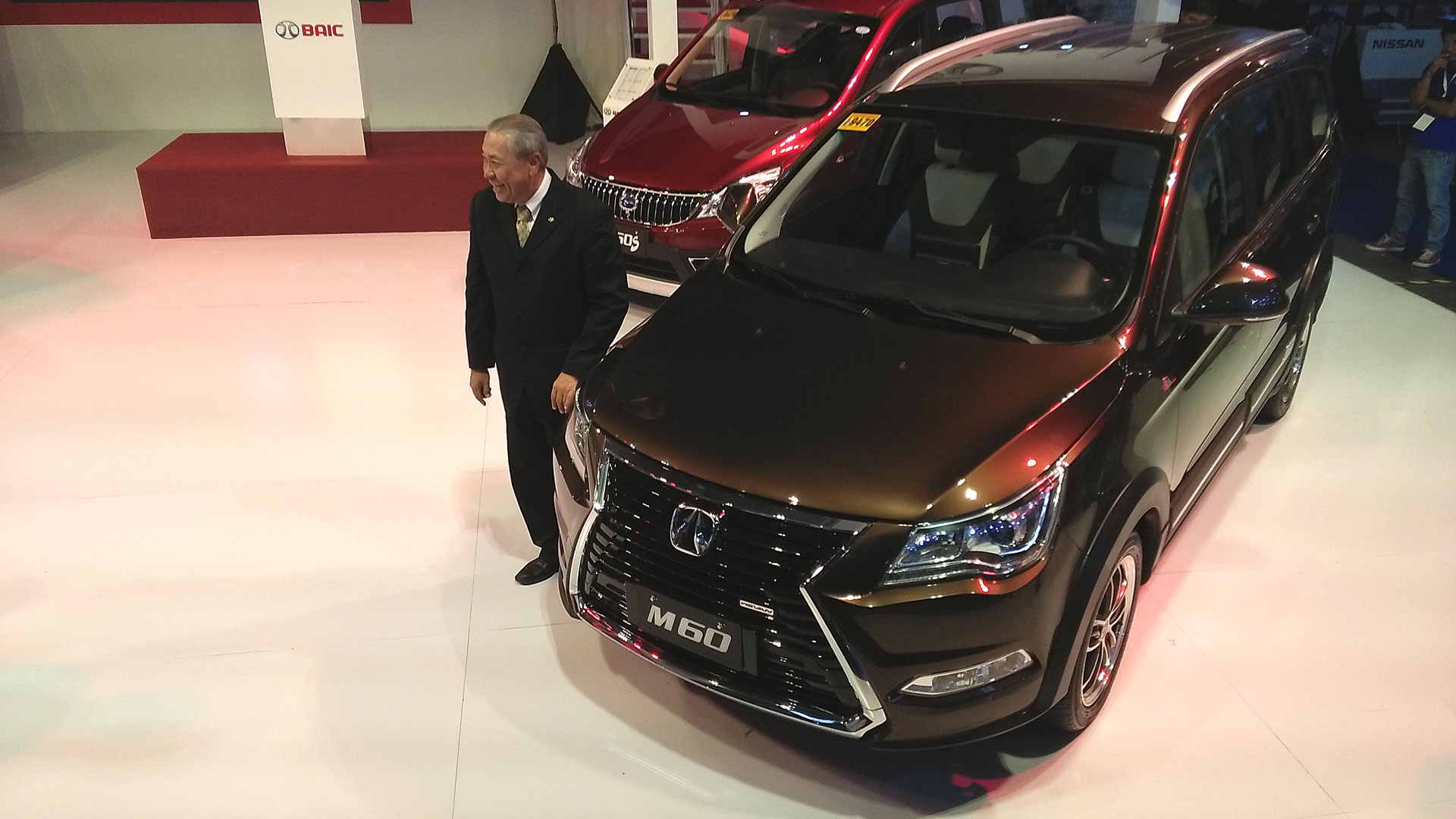
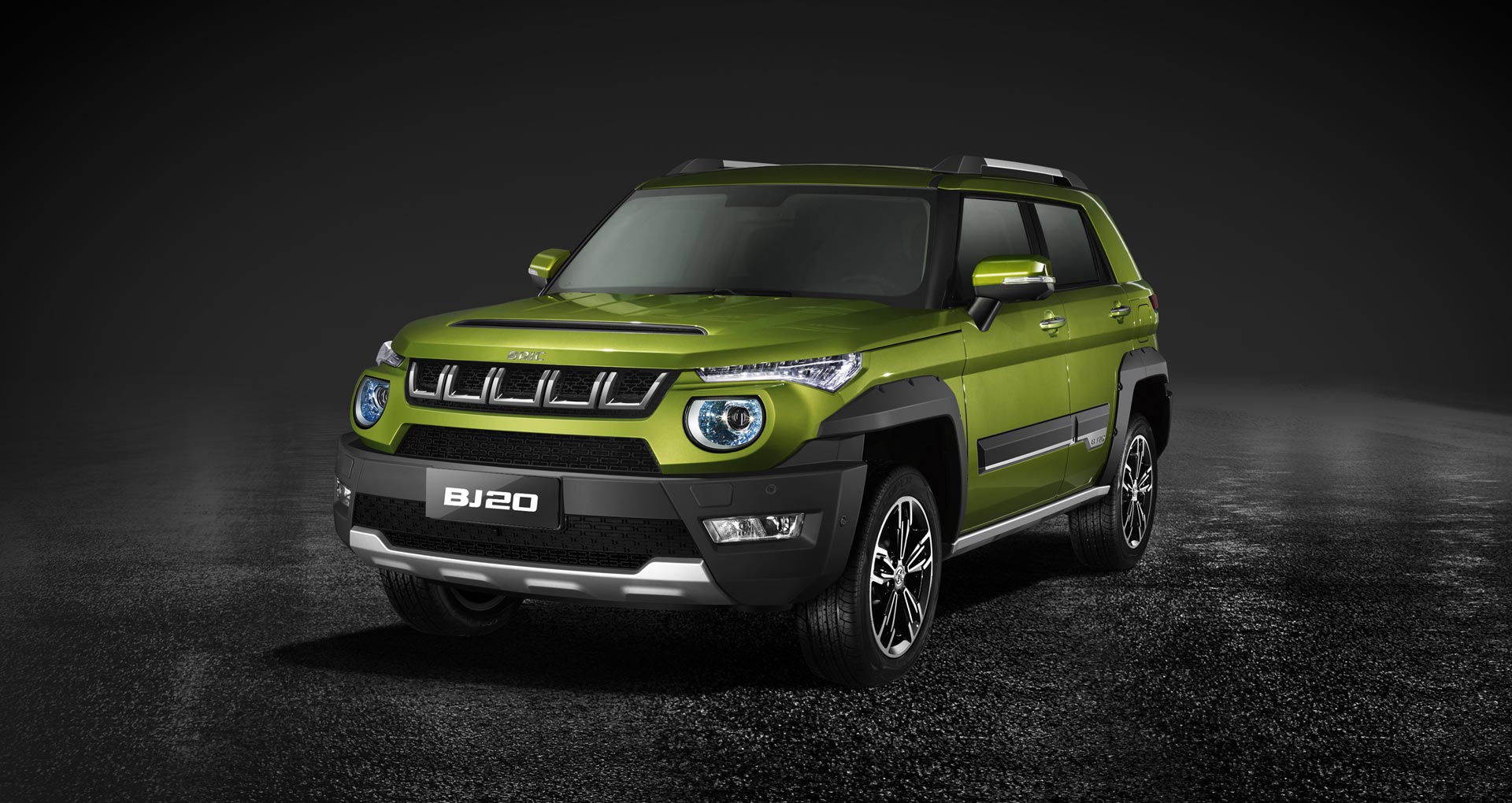










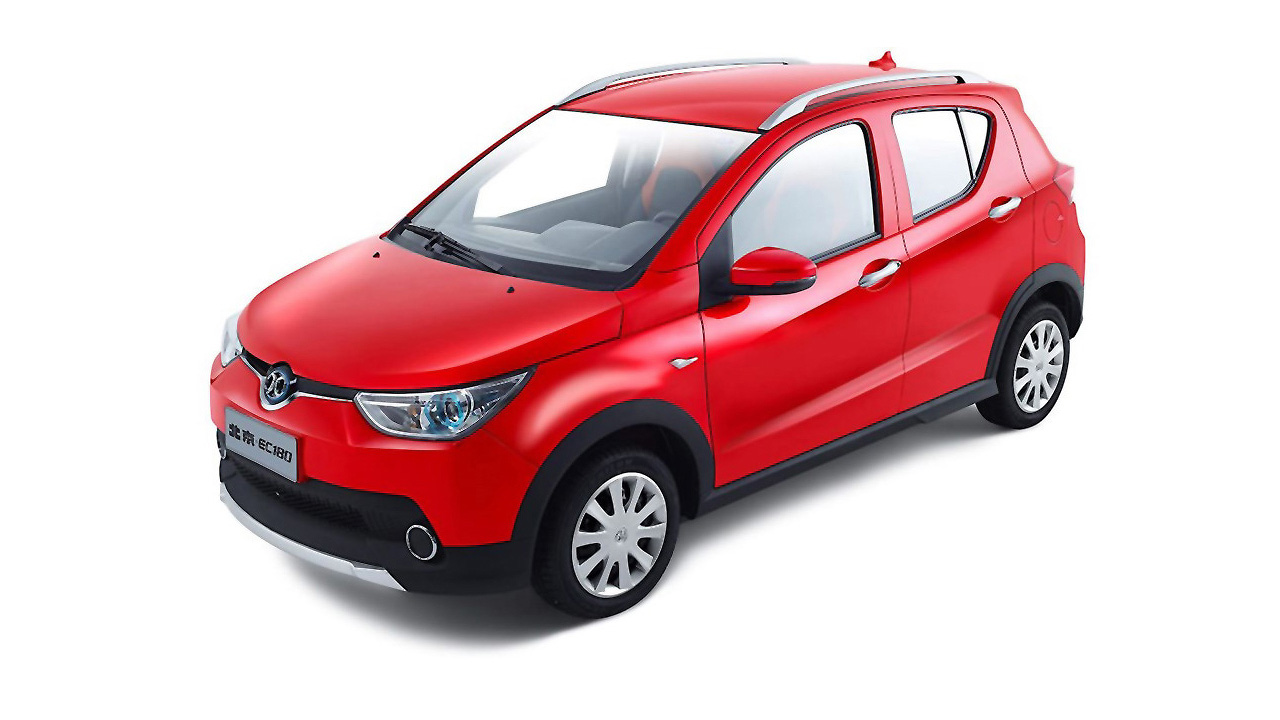

 The base variant of the Tesla Model S has its motor delivering 362hp with 441Nm of torque to attain a top speed of 249km/h. The Nissan Leaf’s powerplant puts out 147hp with 320Nm of torque to push things up to a max of 150km/h. In contrast, and in context, the bestselling BAIC EC is optimized as a city commuter with an efficient 41hp and 140Nm motor keeping things civil with a top speed of 100km/h,
The base variant of the Tesla Model S has its motor delivering 362hp with 441Nm of torque to attain a top speed of 249km/h. The Nissan Leaf’s powerplant puts out 147hp with 320Nm of torque to push things up to a max of 150km/h. In contrast, and in context, the bestselling BAIC EC is optimized as a city commuter with an efficient 41hp and 140Nm motor keeping things civil with a top speed of 100km/h,


 Built by BAIC’s Changhe joint-venture with Suzuki Motors of Japan, the Kalayaan featues a license-built Suzuki K14B-A 1.4 liter gasoline engine delivering peak numbers of 94hp at 6000rpm and 115Nm at 3200rpm. The Kalayaan’s cleaner burning Euro 4 compliant gasoline engine could be advantageous on the short, crowded inner-city routes it’s meant to serve. And, the engine’s conventional valve-train, eschewing the K14B’s variable valve timing (VVT) option, could translate to easier, less complicated maintenance.
Built by BAIC’s Changhe joint-venture with Suzuki Motors of Japan, the Kalayaan featues a license-built Suzuki K14B-A 1.4 liter gasoline engine delivering peak numbers of 94hp at 6000rpm and 115Nm at 3200rpm. The Kalayaan’s cleaner burning Euro 4 compliant gasoline engine could be advantageous on the short, crowded inner-city routes it’s meant to serve. And, the engine’s conventional valve-train, eschewing the K14B’s variable valve timing (VVT) option, could translate to easier, less complicated maintenance. Another distinction of the Kalayaan jeepney is its body-on-frame single-body construction. Unlike modular two-box implementations with the front cabin and the rear body separately bolted down to the chassis-frame, the Kalayaan features front and rear cabin compartments that are welded together into a single body. This contributes to the body’s overall rigidity, making the Kalayaan resistant to body twisting and delivering greater stability that’s critical on the modern jeepney with its mandatory high ceiling and consequently higher center of gravity.
Another distinction of the Kalayaan jeepney is its body-on-frame single-body construction. Unlike modular two-box implementations with the front cabin and the rear body separately bolted down to the chassis-frame, the Kalayaan features front and rear cabin compartments that are welded together into a single body. This contributes to the body’s overall rigidity, making the Kalayaan resistant to body twisting and delivering greater stability that’s critical on the modern jeepney with its mandatory high ceiling and consequently higher center of gravity.
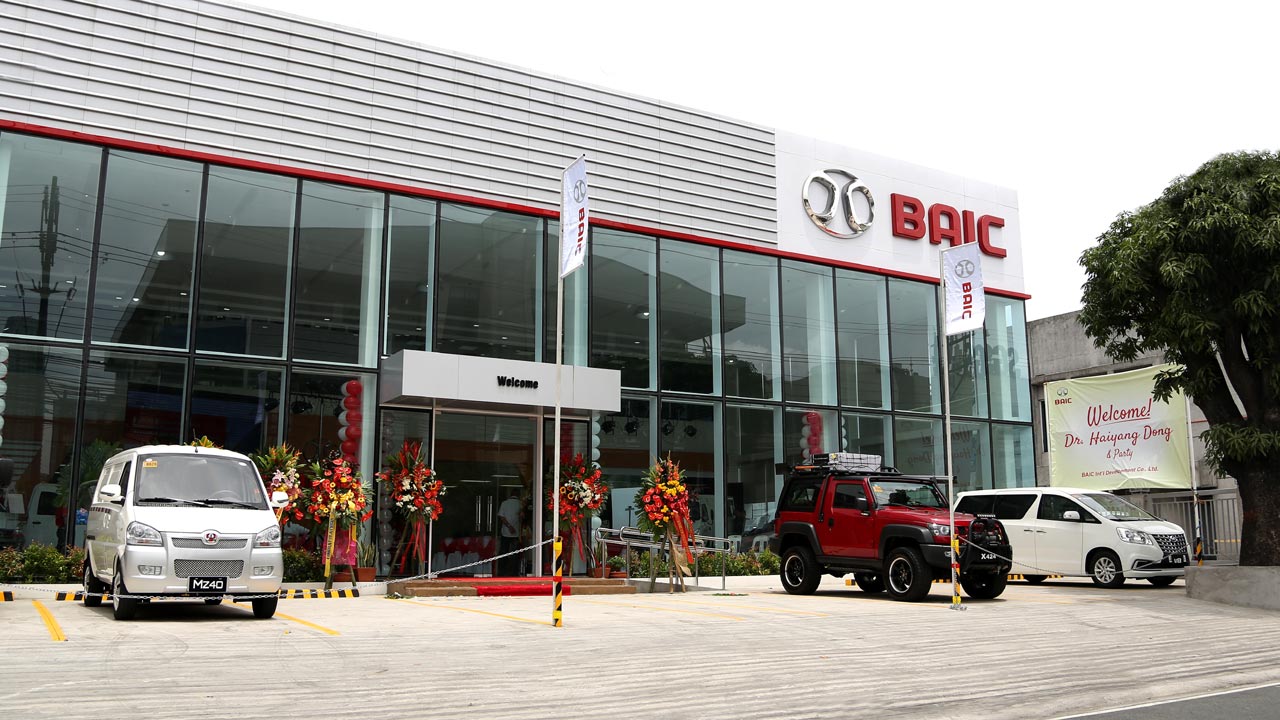







 The Freedom measures around 4.5m in length (the single-cab at 4.400m, the double at 4.565m), much longer than the 3.8m of the Suzuki and Tata models. This up-sizing translates into greater capacity with the Freedom having payloads of 990kg on the single-cab variant and 905kg on the double. At close to one ton of payload, the Freedom brandishes a significant margin over the 735kg of the Super Carry and the 800kg of the Ace. The Freedom’s cargo bay is much longer, to the tune of more than 0.3m when comparing single-cab variants. On the double-cab variant, the cargo bay is similarly longer than those on sporty mid-size double-cab pickups.
The Freedom measures around 4.5m in length (the single-cab at 4.400m, the double at 4.565m), much longer than the 3.8m of the Suzuki and Tata models. This up-sizing translates into greater capacity with the Freedom having payloads of 990kg on the single-cab variant and 905kg on the double. At close to one ton of payload, the Freedom brandishes a significant margin over the 735kg of the Super Carry and the 800kg of the Ace. The Freedom’s cargo bay is much longer, to the tune of more than 0.3m when comparing single-cab variants. On the double-cab variant, the cargo bay is similarly longer than those on sporty mid-size double-cab pickups. A surprising plus: the Freedom mounts a Euro 4 compliant 94hp 1.4L Suzuki K14B-A engine (from the same, well-proven series that powers the Suzuki Ertiga MPV and Ciaz sedan). That Suzuki mill hasn’t been outsourced but manufactured in-house instead, and legitimately, by the Freedom’s original manufacturer. Coming to this market by way of the global BAIC Group of China, the Freedom is manufactured by Jiangxi Changhe Suzuki Automobile Co. (Changhe), the light commercial vehicle manufacturer that’s in a joint venture with Suzuki Motor Corporation of Japan. Changhe became a subsidiary of the BAIC Group in 2013 when the big conglomerate acquired 70% controlling stake. (In the China domestic market, the model is differently branded but similarly badged as the Changhe Freedom Mini-Truck.)
A surprising plus: the Freedom mounts a Euro 4 compliant 94hp 1.4L Suzuki K14B-A engine (from the same, well-proven series that powers the Suzuki Ertiga MPV and Ciaz sedan). That Suzuki mill hasn’t been outsourced but manufactured in-house instead, and legitimately, by the Freedom’s original manufacturer. Coming to this market by way of the global BAIC Group of China, the Freedom is manufactured by Jiangxi Changhe Suzuki Automobile Co. (Changhe), the light commercial vehicle manufacturer that’s in a joint venture with Suzuki Motor Corporation of Japan. Changhe became a subsidiary of the BAIC Group in 2013 when the big conglomerate acquired 70% controlling stake. (In the China domestic market, the model is differently branded but similarly badged as the Changhe Freedom Mini-Truck.) And, finally, that double-cab option on the Freedom is a game-changing rarity in its category (not counting those on small, surplus multi-cabs). With the option for sedan-like seating for five passengers combined with her close to mainstream dimensions and full-grown engine (an engine that’s aircon-ready, no less), the Freedom stands an excellent chance of becoming widely accepted as a common family pickup truck. Not like the high-riding and sleeked-up pickups from the big brands that figured in the truck wars last year, but something that’s less sport and more utility, something that’s more of a truck. Sure, the Freedom is less pretty, more of your money invested in function, damned little of it in form, but that also speaks to character, makes a fair statement about the owner, doesn’t it?
And, finally, that double-cab option on the Freedom is a game-changing rarity in its category (not counting those on small, surplus multi-cabs). With the option for sedan-like seating for five passengers combined with her close to mainstream dimensions and full-grown engine (an engine that’s aircon-ready, no less), the Freedom stands an excellent chance of becoming widely accepted as a common family pickup truck. Not like the high-riding and sleeked-up pickups from the big brands that figured in the truck wars last year, but something that’s less sport and more utility, something that’s more of a truck. Sure, the Freedom is less pretty, more of your money invested in function, damned little of it in form, but that also speaks to character, makes a fair statement about the owner, doesn’t it?


 She’s aptly named and could’ve been badged either as the Transporter or the Commuter–that’s how optimized she is for the people-mover role.
She’s aptly named and could’ve been badged either as the Transporter or the Commuter–that’s how optimized she is for the people-mover role.